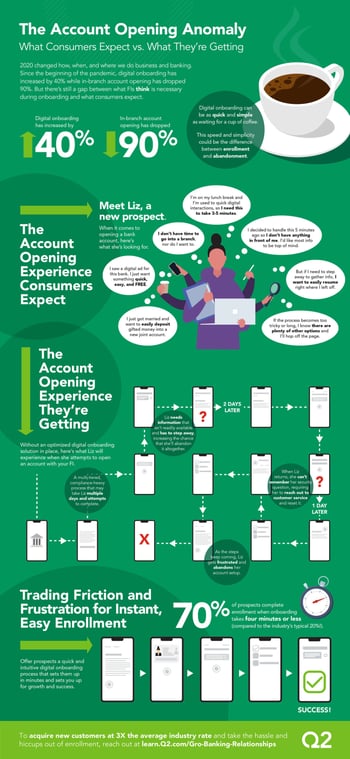Onboarding new treasury accounts is a time-consuming process for most financial institutions and a poor experience for their clients. Why is this? Every company is talking about their digital transformation and customer experience-focused teams. But in reality it’s a free-for-all of paper forms, phone calls, siloed digital systems, and in-person interactions that mean most commercial FIs are still challenged to create a smooth treasury sales and onboarding experience.
Here is what we’ve seen:
- 40+ day average for time-to-revenue
- $750 lost revenue per customer/month
- 15 days average treasury onboarding
Various sources.
The biggest friction is the amount of time it takes to open a DDA and tie it to the underlying treasury services where a client can truly be using the services. Clients get frustrated when they must sign agreements during DDA opening and then again days/weeks later when they must sign treasury documents, while having to talk to multiple people throughout the process.
Another frustration is lack of self-service; today, clients must go through a bank contact to make changes, and that process takes days or weeks.
- Commercial Banking Executive at a Community Bank
The good news is, technology has massive potential to transform the commercial banking model, helping bankers find, win, and extend more commercial relationships more efficiently than ever before. But to get there, we need to get to the root problems that make treasury onboarding such a challenge. Based on our interviews with hundreds of commercial financial institutions we see four common challenges with your treasury onboarding process today.
- Customer Experience
Treasury onboarding sets the tone for a new relationship with a commercial client. The first handful of interactions that client has with you are a direct reflection on what they can expect from doing business with your bank or credit union. But today, the treasury onboarding process is a mix of paper forms, phone calls, digital interactions, and branch visits. - Process Inefficiency
Bank and credit union treasury staff have to constantly key and rekey data into many independent systems (e.g., core, CRM, commercial payments, etc.) that are part of the treasury onboarding process. Manual entry not only extends the duration of the onboarding process but can also be fraught with errors and inconsistencies. - Lack of Self-Service
The traditional onboarding process relies on paper, wet signatures, branch visits, and in-person interactions to complete a sale. Selling depends on many data sources and technology systems, spans across various departments of FI staff, and touches on many elements of the client lifecycle. - Capitalizing on Cross-Sell
Most FIs have a small treasury sales team and rely on channel sales and incentivizing branch staff for referrals. The problem is these incentives are difficult to manage and maintain visibility to, and don’t always create high-quality opportunities for sales staff to convert into long-term business. Useful client data is hard to find and requires FI staff to piece together that data with paper forms, phone conversations, and other ad-hoc relationship information in order to know when and what services to offer.
Solving the Treasury Onboarding Problem
If these challenges sound familiar to you, don’t fret – even the most successful commercial FIs we talk to are faced with them, too. But we believe that by identifying these problems and digging deep on why they exist, we can put ourselves in a position to solve treasury onboarding for the digital world.
If you’re ready to learn more about these challenges and how they can be solved, check out our Treasury Onboarding eBook.





